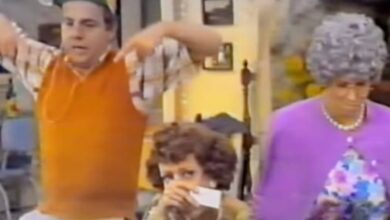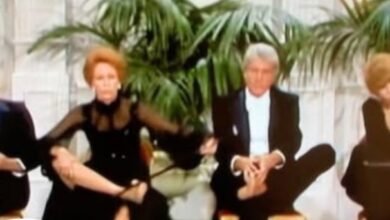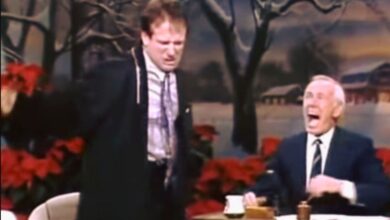Bee Gees’ ‘How Can You Mend a Broken Heart’ Becomes Their First U.S. No. 1 Hit in 1971, Marking a Pivotal Career Resurgence
In May 1971, the Bee Gees released “How Can You Mend a Broken Heart,” a poignant ballad that not only topped the U.S. Billboard Hot 100 but also signaled a significant comeback for the group. This track became their first number-one hit in the United States, staying at the summit for four consecutive weeks and marking a turning point in their musical journey. The song’s heartfelt lyrics and harmonious melodies resonated deeply with audiences, establishing it as a timeless classic.
The Bee Gees—comprising brothers Barry, Robin, and Maurice Gibb—originated from the Isle of Man and were raised in Manchester, England, before relocating to Australia in the late 1950s. They gained initial fame in Australia before returning to the UK in the mid-1960s, where they achieved international success with hits like “Massachusetts” and “To Love Somebody.” Their unique blend of pop, rock, and soul, combined with their distinctive harmonies, set them apart in the music industry.
The inspiration for “How Can You Mend a Broken Heart” came during a period of reconciliation for the Gibb brothers. After a brief split in 1969, Barry and Robin reunited in 1970, leading to a creative resurgence. They wrote the song in August 1970, capturing the emotional turmoil and healing process of their reunion. Initially offered to Andy Williams, the brothers decided to record it themselves, recognizing its personal significance.
Recorded on January 28, 1971, at IBC Studios in London, the track featured Barry on rhythm guitar, Maurice on bass and piano, and Robin on lead vocals for the verses. The production, overseen by Robert Stigwood and the Bee Gees, incorporated lush orchestration arranged by Bill Shepherd, enhancing the song’s emotional depth. The recording session was remarkably efficient, with the band completing multiple tracks that day.
Upon its release, “How Can You Mend a Broken Heart” received widespread acclaim. It not only topped the Billboard Hot 100 but also reached number four on the Billboard Adult Contemporary chart. Despite its success in the U.S., the song did not chart in the UK, highlighting the group’s varying international reception at the time. Nevertheless, the track’s popularity contributed to the success of their album “Trafalgar,” which peaked at number 34 on the Billboard 200.
The song’s impact extended beyond commercial success; it played a crucial role in reshaping the Bee Gees’ musical identity. Moving away from their earlier baroque pop style, the group embraced more soulful and introspective themes, aligning with the evolving musical landscape of the early 1970s. This transition laid the groundwork for their later ventures into disco and R&B.
“How Can You Mend a Broken Heart” also revitalized the Bee Gees’ career, opening doors to new audiences and opportunities. The song’s success in the U.S. market led to increased media exposure, television appearances, and a broader fan base. It reaffirmed their status as versatile songwriters and performers capable of adapting to changing musical trends.
The song’s influence extended to other artists and genres, inspiring numerous covers and reinterpretations. Notably, Al Green’s 1972 rendition infused the track with a soulful depth, earning critical acclaim and further cementing its status as a classic. Green’s version introduced the song to R&B audiences and showcased its adaptability across musical styles.
Over the years, “How Can You Mend a Broken Heart” has been covered by various artists, including Cher, Michael Bublé, and Johnny Mathis, each bringing their unique interpretation to the song. These renditions have contributed to the song’s enduring legacy and demonstrated its universal appeal.
The period surrounding the song’s release was significant for the Bee Gees personally and professionally. Their reconciliation not only led to creative rejuvenation but also strengthened their familial bonds. This renewed unity was reflected in their collaborative efforts and the emotional depth of their music during this era.
Decades later, “How Can You Mend a Broken Heart” continues to resonate with listeners. Its inclusion in films like “American Hustle” and the 2020 HBO documentary of the same name has introduced the song to new generations, reaffirming its place in popular culture. The documentary, in particular, highlighted the Bee Gees’ enduring influence and the song’s significance in their catalog.
The song’s introspective lyrics and emotive delivery have influenced countless musicians and songwriters. Its exploration of heartbreak and healing has become a template for ballads across genres, showcasing the power of vulnerability in music. The Bee Gees’ willingness to delve into personal themes paved the way for more emotionally honest songwriting in popular music.
In recognition of its impact, “How Can You Mend a Broken Heart” has received numerous accolades and honors. It remains a staple in retrospectives of the Bee Gees’ work and is often cited in discussions of the greatest ballads of all time. The song’s enduring popularity underscores its timeless quality and emotional resonance.
Reflecting on the song’s legacy, it’s evident that “How Can You Mend a Broken Heart” represents a pivotal moment in the Bee Gees’ career. It encapsulates their resilience, adaptability, and profound connection as brothers and artists. The track not only marked a commercial triumph but also signaled a deeper, more mature phase in their musical evolution.
Ultimately, “How Can You Mend a Broken Heart” stands as a testament to the Bee Gees’ artistry and emotional depth. Its enduring appeal lies in its universal themes and heartfelt delivery, ensuring its place in the pantheon of classic songs that continue to touch hearts across generations.





